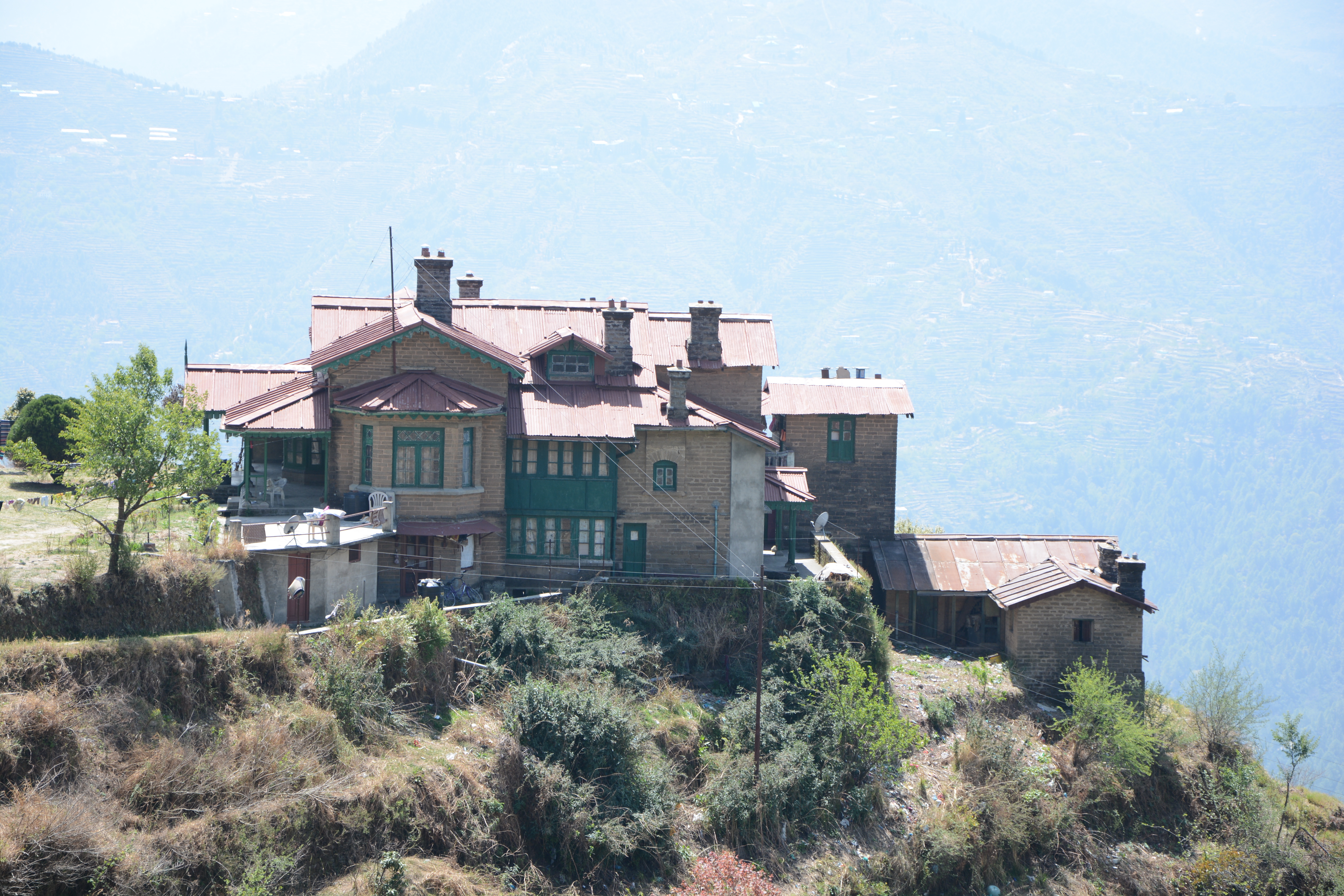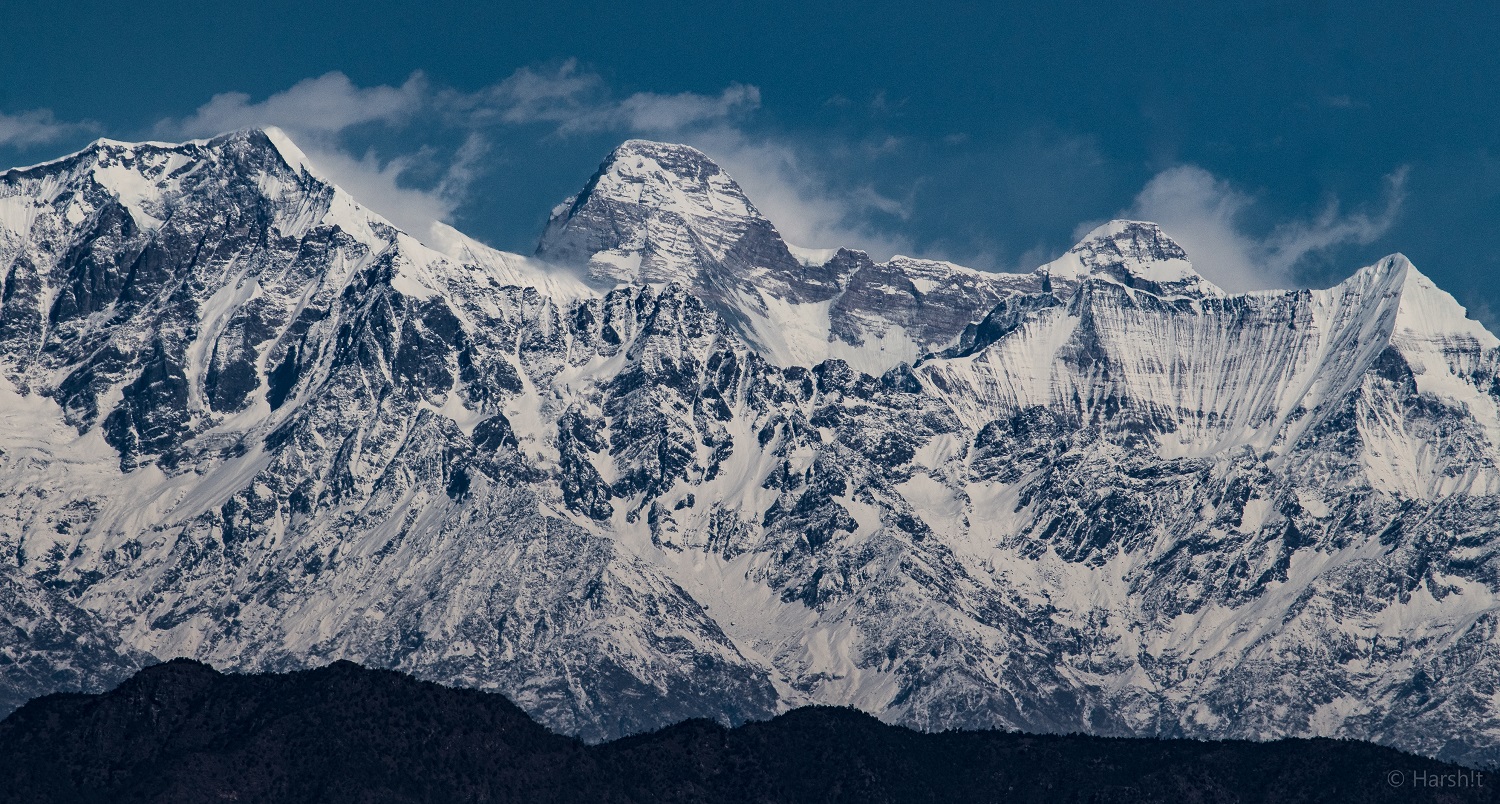|
Mukhteshwar
Mukteshwar is a village and tourist destination in the Nainital district of Uttarakhand, India. It sits high in the Kumaon Hills at an altitude of 2171 meters (7500 feet), 51 km from Nainital, 72 km from Haldwani, and 343 km from Delhi. Places of interest Mukteshwar Shiva temple Mukteshwar gets its name from a 350-year-old temple of Shiva, known as ''Mukteshwar Dham'', situated atop the highest point in the town, on the veterinary institute's campus. Close to it lie the overhanging cliffs, locally known as ''Chauli-ki-Jali'', used for rock climbing and rappelling, with an excellent view of the valleys below. ''Mukteshwar famously know for its breezy waterfalls houses some famous waterfallas such as ''The Bhalu Ghaad, Tarikhet waterfalls, Rudradhari waterfall and The Dhokaney waterfall''. The sunrise point is at the government-run PWD guest house. Another tourist attraction is the small Satoli Village, situated just 21 km from Mukteshwar. O ... [...More Info...] [...Related Items...] OR: [Wikipedia] [Google] [Baidu] |
WikiProject Indian Cities
A WikiProject, or Wikiproject, is a Wikimedia movement affinity group for contributors with shared goals. WikiProjects are prevalent within the largest wiki, Wikipedia, and exist to varying degrees within sister projects such as Wiktionary, Wikiquote, Wikidata, and Wikisource. They also exist in different languages, and translation of articles is a form of their collaboration. During the COVID-19 pandemic, CBS News noted the role of Wikipedia's WikiProject Medicine in maintaining the accuracy of articles related to the disease. Another WikiProject that has drawn attention is WikiProject Women Scientists, which was profiled by '' Smithsonian'' for its efforts to improve coverage of women scientists which the profile noted had "helped increase the number of female scientists on Wikipedia from around 1,600 to over 5,000". On Wikipedia Some Wikipedia WikiProjects are substantial enough to engage in cooperative activities with outside organizations relevant to the field at issue. For ex ... [...More Info...] [...Related Items...] OR: [Wikipedia] [Google] [Baidu] |
Jim Corbett
Edward James Corbett (25 July 1875 – 19 April 1955) was a British hunter, tracker, naturalist, and author who hunted a number of man-eating tigers and leopards in the Indian subcontinent. He held the rank of colonel in the British Indian Army and was frequently called upon by the Government of the United Provinces of Agra and Oudh, now the Indian states of Uttar Pradesh and Uttarakhand, to kill man-eating tigers and leopards that were preying on people in the nearby villages of the Kumaon- Garhwal Regions. He authored ''Man-Eaters of Kumaon'', ''Jungle Lore'', and other books recounting his hunts and experiences, which enjoyed critical acclaim and commercial success. He became an avid photographer and spoke out for the need to protect India's wildlife from extermination. Early life Edward James Corbett was born on 25 July 1875 of British ancestry in the town of Nainital in Kumaon division, Uttarakhand, India. He grew up in a large family of sixteen children and was the e ... [...More Info...] [...Related Items...] OR: [Wikipedia] [Google] [Baidu] |
Potato
The potato is a starchy food, a tuber of the plant ''Solanum tuberosum'' and is a root vegetable native to the Americas. The plant is a perennial in the nightshade family Solanaceae. Wild potato species can be found from the southern United States to southern Chile. The potato was originally believed to have been domesticated by Native Americans independently in multiple locations,University of Wisconsin-Madison, ''Finding rewrites the evolutionary history of the origin of potatoes'' (2005/ref> but later genetic studies traced a single origin, in the area of present-day southern Peru and extreme northwestern Bolivia. Potatoes were domesticated there approximately 7,000–10,000 years ago, from a species in the ''Solanum brevicaule'' complex. Lay summary: In the Andes region of South America, where the species is indigenous, some close relatives of the potato are cultivated. Potatoes were introduced to Europe from the Americas by the Spanish in the second half of the 16 ... [...More Info...] [...Related Items...] OR: [Wikipedia] [Google] [Baidu] |
Nanda Devi
Nanda Devi is the second-highest mountain in India, after Kangchenjunga, and the highest located entirely within the country (Kangchenjunga is on the border of India and Nepal). It is the 23rd-highest peak in the world. Nanda Devi was considered the highest mountain in the world before computations in 1808 proved Dhaulagiri to be higher. It was also the highest mountain in India until 1975, when Sikkim, an independent kingdom until 1948 and a protectorate of India thereafter, became a part of the Republic of India. It is located in Chamoli Garhwal district of Uttarakhand, between the Rishiganga valley on the west and the Goriganga valley on the east. The peak, whose name means "Bliss-Giving Goddess", is regarded as the patron goddess of the Garhwal and Kumaon Himalayas. In acknowledgment of its religious significance and for the protection of its fragile ecosystem, the Government of India declared the peak as well as the circle of high mountains surrounding it—the Nanda ... [...More Info...] [...Related Items...] OR: [Wikipedia] [Google] [Baidu] |
Himalayas
The Himalayas, or Himalaya (; ; ), is a mountain range in Asia, separating the plains of the Indian subcontinent from the Tibetan Plateau. The range has some of the planet's highest peaks, including the very highest, Mount Everest. Over 100 peaks exceeding in elevation lie in the Himalayas. By contrast, the highest peak outside Asia (Aconcagua, in the Andes) is tall. The Himalayas abut or cross five countries: Bhutan, India, Nepal, China, and Pakistan. The sovereignty of the range in the Kashmir region is disputed among India, Pakistan, and China. The Himalayan range is bordered on the northwest by the Karakoram and Hindu Kush ranges, on the north by the Tibetan Plateau, and on the south by the Indo-Gangetic Plain. Some of the world's major rivers, the Indus, the Ganges, and the Tsangpo–Brahmaputra, rise in the vicinity of the Himalayas, and their combined drainage basin is home to some 600 million people; 53 million people live in the Himalayas. The Himalayas have ... [...More Info...] [...Related Items...] OR: [Wikipedia] [Google] [Baidu] |
Binsar
Binsar Wildlife Sanctuary is an Indian wildlife sanctuary. Binsar was the summer capital of the Chand Kings, who ruled over Kumaon from the 11th to 18th centuries AD. Binsar was established in 1988 for the conservation and protection of the shrinking broad leaf oak (''Quercus'') forests of the Central Himalayan region, and it has over 200 bird species. Geography It sits on top of the Jhandi Dhar hills in the Himalayas, about 33 km north of Almora town in Uttarakhand. The sanctuary spreads over 45.59 km2. Its altitude varies from 900 to 2500 metres with an average height of 2412 metres. The temperature of this area is about 20 °C. From a place called Zero Point the Himalayan peaks Kedarnath Peak, Shivling, Trisul and Nanda Devi are visible. Flora and fauna Binsar has a museum about the flora and fauna of the region. The sanctuary hosts 25 types of trees, 24 types of bushes and 7 varieties of grasses. The higher altitudes are covered with oak and rhododendr ... [...More Info...] [...Related Items...] OR: [Wikipedia] [Google] [Baidu] |
Almora
Almora ( Kumaoni: ''Almāḍ'') is a municipal board and a cantonment town in the state of Uttarakhand, India. It is the administrative headquarters of Almora district. Almora is located on a ridge at the southern edge of the Kumaon Hills of the Himalaya range. Koshi (Kaushiki) and Suyal (Salmale) rivers flow along the city and snow-capped Himalayas can be seen in the background. Almora was founded in 1568 by King Kalyan Chand; however, there are accounts of human settlements in the hills and surrounding region in the Hindu epic Mahabharata (8th and 9th century BCE). Almora was the seat of Chand kings that ruled over the Kumaon Kingdom. It is considered the cultural heart of the Kumaon region of Uttarakhand. According to the provisional results of the 2019 national census of India Almora had a population of 179,000. Nestled within higher peaks of the Himalaya, Almora enjoys a year-round mild temperate climate. The town is visited by thousands of tourists annually from all ove ... [...More Info...] [...Related Items...] OR: [Wikipedia] [Google] [Baidu] |
Goat
The goat or domestic goat (''Capra hircus'') is a domesticated species of goat-antelope typically kept as livestock. It was domesticated from the wild goat (''C. aegagrus'') of Southwest Asia and Eastern Europe. The goat is a member of the animal family Bovidae and the tribe Caprini, meaning it is closely related to the sheep. There are over 300 distinct breeds of goat.Hirst, K. Kris"The History of the Domestication of Goats".''About.com''. Accessed August 18, 2008. It is one of the oldest domesticated species of animal, according to archaeological evidence that its earliest domestication occurred in Iran at 10,000 calibrated calendar years ago. Goats have been used for milk, meat, fur, and skins across much of the world. Milk from goats is often turned into goat cheese. Female goats are referred to as ''does'' or ''nannies'', intact males are called ''bucks'' or ''billies'', and juvenile goats of both sexes are called ''kids''. Castrated males are called ''wethers''. Whil ... [...More Info...] [...Related Items...] OR: [Wikipedia] [Google] [Baidu] |
Izatnagar
Izzatnagar is a locality in Bareilly in the Indian States and territories of India, state of Uttar Pradesh. The railway station it houses is one of the three Divisional Headquarters of North Eastern Railway (India), North Eastern Railways. Izzatnagar is also the location of the Indian Veterinary Research Institute (IVRI), Central Avian Research Institute (CARI), Railway Mechanical Workshop [Established in year 1913], Diesel Loco Shed and Hartmann College. Izzatnagar also houses the famous Trishul Air-base of Indian Air Force. History It is named after Sir Alexander Izat (1844–920), a Scottish engineer and director of the Bengal and North Western Railway. He specialized in Bridge Engineering and came to Izzatnagar in 1896. Famous attractions * Dhopeshwar Nath temple * Trivti Nathan temple *Railway Officers Colony – Road no. 2, Izzatnagar. (It contains 12 Bungalows, on a 1 Kilometre long road, that age back to 1900s and are still in use by current bureaucrats and highly rep ... [...More Info...] [...Related Items...] OR: [Wikipedia] [Google] [Baidu] |
Organisms
In biology, an organism () is any living system that functions as an individual entity. All organisms are composed of cells (cell theory). Organisms are classified by taxonomy into groups such as multicellular animals, plants, and fungi; or unicellular microorganisms such as protists, bacteria, and archaea. All types of organisms are capable of reproduction, growth and development, maintenance, and some degree of response to stimuli. Beetles, squids, tetrapods, mushrooms, and vascular plants are examples of multicellular organisms that differentiate specialized tissues and organs during development. A unicellular organism may be either a prokaryote or a eukaryote. Prokaryotes are represented by two separate domains – bacteria and archaea. Eukaryotic organisms are characterized by the presence of a membrane-bound cell nucleus and contain additional membrane-bound compartments called organelles (such as mitochondria in animals and plants and plastids in ... [...More Info...] [...Related Items...] OR: [Wikipedia] [Google] [Baidu] |
Contagious Disease
A contagious disease is an infectious disease that is readily spread (that is, communicated) by transmission of a pathogen through contact (direct or indirect) with an infected person. A disease is often known to be contagious before medical science discovers its causative agent. Koch's postulates, which were published at the end of the 19th century, were the standard for the next 100 years or more, especially with diseases caused by bacteria. Microbial pathogenesis attempts to account for diseases caused by a virus. The disease itself can also be called a contagion. Historical meaning Originally, the term referred to a ''contagion'' (a derivative of 'contact') or disease transmissible only by direct physical contact. In the modern-day, the term has sometimes been broadened to encompass ''any'' communicable or infectious disease. Often the word can only be understood in context, where it is used to emphasize very infectious, easily transmitted, or especially severe communic ... [...More Info...] [...Related Items...] OR: [Wikipedia] [Google] [Baidu] |







